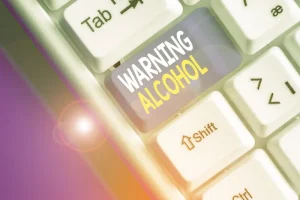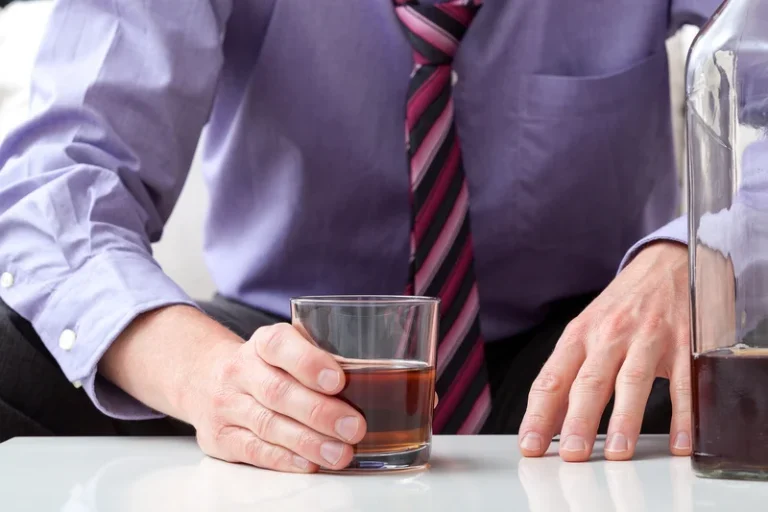Why Do Alcoholics Drink? Alcohol Changes the Brain A Chemical Imbalance
16 février 2024 Posted by t.bigueres@gmail.com Sober living 0 thoughts on “Why Do Alcoholics Drink? Alcohol Changes the Brain A Chemical Imbalance”We publish material that is researched, cited, edited and reviewed by licensed medical professionals. The information we provide is not intended to be a substitute for professional medical advice, diagnosis or treatment. It should not be used in place of the advice of your physician or other qualified healthcare providers. Moderate drinkers can consume alcohol and go days, weeks, or even years before they have another drink. When someone has an addiction to alcohol, drinking becomes an essential part of their life. Alcoholics might even prioritize drinking over family obligations, work, financial responsibilities, and social gatherings with friends.
- Their constant drinking lessens their ability to process and reason but also makes them feel good.
- Some people may drink alcohol to the point that it causes problems, but they’re not physically dependent on alcohol.
- Social norms are the behavioral expectations within a community.
- Alcoholics who self-medicate also drink to experience and enhance pleasure.
In fact, by the time alcoholism develops, alcoholics are physically and emotionally dependent on alcohol. Usually, the attempt to feel and function “normally” becomes an alcoholic’s reason for drinking. The brain has a delicate balance of chemicals called neurotransmitters. are psychedelics addictive Excessive drinking disrupts this balance and changes the way these chemicals function. Drinking alcohol increases gaba-aminobutyric acid, or GABA, which suppresses the central nervous system, the part of the body that regulates thoughts and helps us process information.
People are motivated to use addictive substances for these reasons.
If your pattern of drinking results in repeated significant distress and problems functioning in your daily life, you likely have alcohol use disorder. However, even a mild disorder can escalate and lead to serious problems, so early treatment is important. Unhealthy alcohol use includes any alcohol use that puts your health or safety at risk or causes other alcohol-related problems. It also includes binge drinking — a pattern of drinking where a male has five or more drinks within two hours or a female has at least four drinks within two hours.
Binge drinking raises your risk of injuries, car crashes, and alcohol overdose. It also puts you at risk of becoming violent or being the victim of violence. This means that it is a drug that slows down brain activity. Alcohol can also affect your coordination and physical control. Alcohol use disorder can include periods of being drunk (alcohol intoxication) and symptoms of withdrawal. Let’s consider several factors that are likely to lead to an increased motivation to consume alcohol.
If you’re concerned about someone who drinks too much, ask a professional experienced in alcohol treatment for advice on how to approach that person. Typically, alcohol withdrawal symptoms happen for heavier drinkers. Alcohol withdrawal can begin within hours of ending a drinking session. Your doctor or healthcare provider can diagnose alcohol use disorder. They’ll do a physical exam and ask you questions about your drinking habits.
You can prevent alcohol use disorder by limiting your alcohol intake. According to the National Institute on Alcohol Abuse and Alcoholism, women shouldn’t drink more than one drink per day, and men shouldn’t drink more than two drinks per day. Although the exact cause of alcohol use disorder is unknown, there are certain factors that may increase your risk for developing this disease. If you have questions about whether it is safe for you to drink, talk with your health care provider.
What is excessive drinking?
Unintended injury is the top cause of alcohol-related harm among teens and young adults. While cirrhosis scars from excessive drinking are irreversible, quitting alcohol and leading a healthier lifestyle can help your liver heal from alcohol-related liver disease. Over time, the brain becomes used to these chemical imbalances. ecso arrests man reportedly driving stolen car say drugs found in vehicle In turn, a person needs to drink larger amounts more frequently to reach the same state of relaxation and well-being that they once did. As the brain continues to adapt to alcohol, when a person is not drinking, they can start to go through unpleasant symptoms of withdrawal because their brain chemistry has changed.
The experience of alcohol flush reactions (e.g., body flushes and nausea) after ingestion negatively affects the value of drinking alcohol. The flush reaction is more common in Asian populations but can occur among other groups as well. People with this reaction experience drinking alcohol as less pleasurable than others do, and they have lower drinking alcohol and the adolescent brain national institute on alcohol abuse and alcoholism niaaa rates. Genetic, psychological, social and environmental factors can impact how drinking alcohol affects your body and behavior. Theories suggest that for certain people drinking has a different and stronger impact that can lead to alcohol use disorder. Alcohol use disorder develops when you drink so much that chemical changes in the brain occur.
People with alcohol use disorder will continue to drink even when drinking causes negative consequences, like losing a job or destroying relationships with people they love. They may know that their alcohol use negatively affects their lives, but it’s often not enough to make them stop drinking. Alcoholism has been known by a variety of terms, including alcohol abuse and alcohol dependence. The information on this site should not be used as a substitute for professional medical care or advice. Contact a health care provider if you have questions about your health.
Reasons Why Alcoholics Drink
Too much alcohol affects your speech, muscle coordination and vital centers of your brain. A heavy drinking binge may even cause a life-threatening coma or death. This is of particular concern when you’re taking certain medications that also depress the brain’s function.
Articles Related to Alcoholism
Most alcoholics drink to satisfy cravings and avoid alcohol withdrawal symptoms. Once the brain becomes accustomed to the presence of alcohol, the mind believes it needs alcohol to feel pleasure, prompting a compulsive urge, or craving, to drink. When the craving isn’t satisfied, the body experiences withdrawal symptoms. More severe withdrawal symptoms can include fever, seizures, high blood pressure, and hallucinations. Typically, alcoholics drink and continue to drink to avoid these unpleasant symptoms. The study also revealed that there are specific genes that contribute to alcohol use disorder.
If you feel that you sometimes drink too much alcohol, or your drinking is causing problems, or if your family is concerned about your drinking, talk with your health care provider. Other ways to get help include talking with a mental health professional or seeking help from a support group such as Alcoholics Anonymous or a similar type of self-help group. Past experiences with alcohol help to shape people’s current value and the expectations that they place on drinking alcohol. Alcohol users may recall their previous positive experiences with alcohol, and this may increase their motivation to drink.
People experiencing aversive psychological symptoms value drinking alcohol, because it helps to alleviate their negative feelings. The drinking removes, at least temporarily, the stress of anxiety. This is probably because people are using alcohol to deal with underlying problems rather than seeking out more effective long-term solutions for managing their challenges. By drinking to cope, you’re avoiding dealing with the underlying problem(s), and your alcohol use can actually make them worse—for example, by interfering with relationships with family and friends. Individuals who experience trauma, or who are more prone to depression or anxiety, are more likely to report drinking to cope. Your outlook will depend on your ability to stop drinking.
At the same time, drinking alcohol increases serotonin, a neurotransmitter that helps us feel good, and triggers the release of dopamine, another neurotransmitter that motivates us to keep drinking. Their constant drinking lessens their ability to process and reason but also makes them feel good. Eventually, the brain becomes accustomed to this chemical imbalance, causing individuals to drink more in order to experience the “feel -good” feeling they had before. The goal of using drugs is formed in the same way as any other goal. It is determined largely by, first, the value that the person places on drugs and, second, the person’s expected chances of being able to get the desired benefits from their use. This view can be applied to explain the reasons why people decide to drink.
For example, students drink more on campuses that have a strong drinking culture. The reality is that alcohol can be an addictive substance and, when used in large quantities, can be harmful regardless of why one chooses to drink. If you’re someone who drinks for fun, keep an eye on how much you’re drinking. Enhancement drinkers are more likely to binge drink or lose track of their drinking when with friends, which can lead to harmful consequences like accidents, fights, or unwanted sexual encounters.











